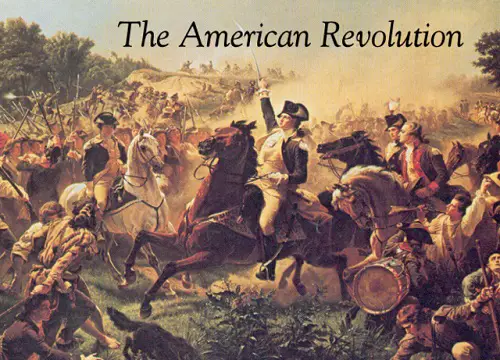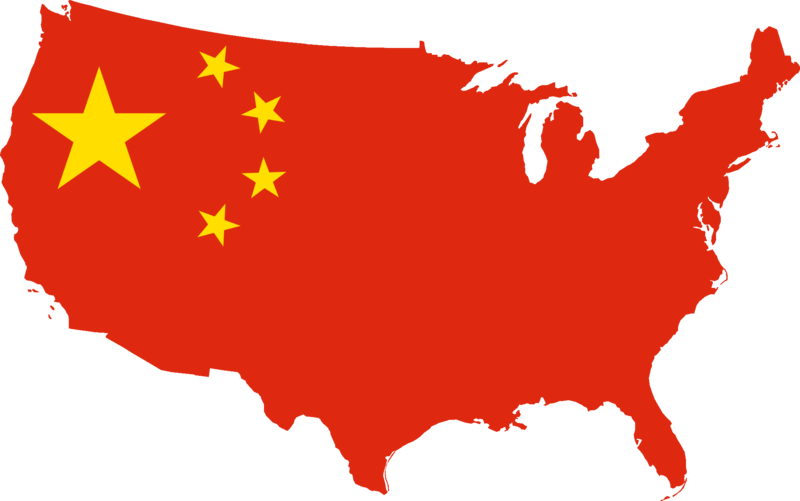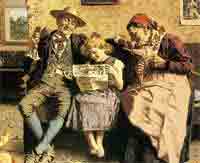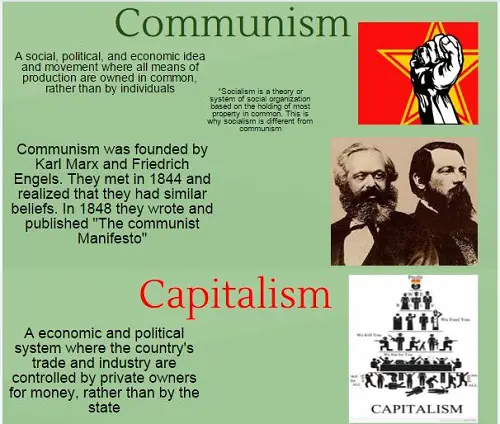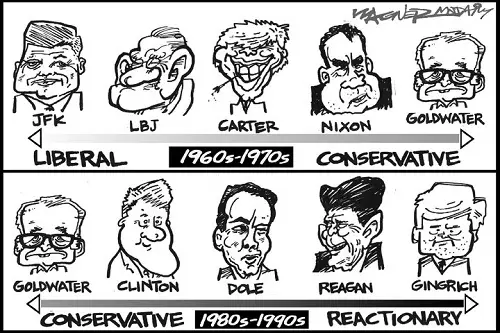
Political Philosophy becomes Ideology
With the advent of the French Revolution and the American War of Independence a new political philosophy was maturing (Mastin 2008). That philosophy has been Liberalism. Historically the roots of Liberalism can be traced back much further to the English Civil War and even further back if you truly are a revisionist. Likewise, Conservatism also can trace its roots far into history’s deep depths to Aristotle and Confucius (Hamilton 2016). For the modern day person, particularly if living on the North American landmass the debate between the two philosophies mirrors party divides and religious practices, especially in the U.S.A. This formation of intellectually armed camps has doggedly focused on the differences between the two philosophies to the point that both are viewed as been the antithesis of one another. This has had the unfortunate consequence of no real healthy debate and understanding taken place between proponents of both philosophies with both camps resorting to name calling and stereotyping to prove a point. It appears both philosophies have become unquestioning ideologies serving to divide the relevant population. This stance would undeniably cause many of the important contributors to both ideas to turn horribly in their graves.
The article will first shed light on what both Liberalism and Conservatism are as philosophical ideas as well as what they arose from historically. I will remain focussed on the more classical interpretations as both Liberalism and Conservatism have both numerous divisions and differing opinion within the ambit of their discussions. As both ideas cannot be called unified in approach or content the fact that they are presented as an ideology seems even sillier. Following the brief discussion on Liberalism and Conservatism, a discussion on their similarities will follow intended to highlight the idea that they are not so fundamentally different and in the realm of everyday politics both are applied equally by differing political opponents.
Conservatism
In a very broad sense, Conservatism expresses the altogether very human fear of radical change and constant attempts to try and prevent it. Thus, proponents of Conservatism have promoted tradition over radical change or revolution (Mastin 2008). Conservatives do not reject change but rather change should occur slowly, unlike in the case of the French Revolution for example. Historically Conservatives, due to placing importance on tradition and the status quo, have been in support of absolute monarchies and provided the main intellectual opposition to revolutions that overthrew the monarchy whether in Great Britain or France. With the violence that revolution and civil war naturally entail it is easy to argue against such radical change. Conservatives today are associated with right-wing politics (Mastin 2008) which typically value private ownership, individualism and self-reliance. They tend to place value on traditional religious values and can be ethnocentric in an attempt to protect the values mentioned above.
As Conservatism looks to preserve what its followers see as a tradition it can be very hard to define Conservatism. For example, while conservatives in Britain would support the monarchy and the land owning classes out of a sense of tradition giving rise to the Tory Party known for its conservative right wing policies, the government of Margaret Thatcher included policies that would typically be examples of classic Liberalism. This is due in part to the need to adopt policies that would protect the ideas held dear by conservatives even if not the typical conservative. Hence by opening markets and preventing government interference, a typically liberal idea, the idea of private ownership can be protected. Although some schools of Conservatism would disagree with such policy if it was seen contrary to a religious value, for example, change cannot be stopped particularly in light of advance in technology. Thus, conservatives look to slow or retard change to prevent what they may see as potential moral ills resulting from unintended consequences (Mastin 2008). This also displays another important trait of Conservatism historically, that it has influenced and been influenced by other political ideas such as Nationalism. While nationalists would seek to promote the sovereignty of a nation and protect its borders from foreign attacks or influence, conservatives would likewise approve of such policies. So while conservatives look to prevent drastic change over the course of history the values often held by conservatives has changed often causing rifts within conservative politics and ideas.
Liberalism
Over the course of its history Liberalism has fractured into a variety of fundamentally similar but differing ideas on how to best serve the people and their liberty politically. That being said, though, Liberalism and liberals, seem to universally agree that liberty is the prime good espoused by liberal ideas. In terms of classic Liberalism looks to protect the individual’s liberty from unnecessary government intervention to limit or prevent personal liberty (Gaus, Courtland, Schmidtz 2015). It is argued by conservatives as well as many liberals whether Liberalism can be seen as a complete or comprehensive political doctrine (Gaus, Courtland, Schmidtz 2015). This may be in part due to liberals disagreeing on what justifies government interference and what doesn’t. Philosophical Anarchists, believers in absolute liberty where no government interference should be tolerated while other more pragmatic schools of Liberalism maintain that government interference will occur to protect other value but such interference must be justified.
Historically, Liberalism looks to protect not only liberty but private ownership and promotes free market economies. Here we see a similarity with Conservatism in that both place great value on the idea of protecting private property as opposed to Communism and other forms of political ideologies that promote varying forms of community ownership. Modern liberals have been oversimplified as promoting left-wing politics as often many liberals are in support of abortion, or women’s reproductive rights, and human rights for people who identify as been part of the lesbian and gay community. Historically, Liberalism was the predominant political philosophy behind revolutions it has incorporated more radical ideas, especially compared with classic Conservatism. As a result, Liberalism came include radical ideas such as limited Socialism including concepts that pertain to the welfare state more readily. This also explains its tolerance of difference. This incorporation of radical ideas that would induce radical change gave the perception of being opposed to Conservatism and vice versa (Mastin 2008).
Similarities between the Opposites
As was mentioned above both conservatives and liberals place great importance on the concept of private property and how government must endeavour to protect it. Another similarity that is potentially the most telling as to their fundamental similarity is the blind acceptance of Neo-liberal economic policies (Tremblay 2008). Neo-liberalism can be defined as:
“refers to a program of reducing trade barriers and internal market restrictions, while using government power to enforce opening of foreign markets. In some ways it is a modern attempt, championed by Conservatives like Ronald Reagan (1911 – 2004) and Margaret Thatcher (1925 – 2013) since the 1970’s, to revert to a purer Classical Liberalism.”(Mastin 2008)
Neo-liberal economic policies are seen as one of the major drivers of the continued globalisation of the planet that has adversely affected the environment, indigenous communities and entire economies as profit is pursued and morality or anything that would hinder profit avoided. Both liberals and conservatives in the U.S. have benefited from such policies enacted by both conservative and liberal governments. Liberal commentators and critics may oppose free market policies in their region but seem complicit in allowing them to occur elsewhere. Conservatives do not seem to exhibit the same hypocrisy as their ideas that support Nationalism would not come into any conflict as it is believed the State and its citizens benefit from neo-liberalism even if it was proved such policies are morally wrong.
Another similarity is that they both support the emergence of the middle-class even if free market policies are slowly eroding the wealth of the middle-class (Tremblay 2008). This seems to be solely political rather than been dominated by a philosophical idea. It is political in the sense that by appearing to protect the middle class the political power of both liberal and conservative political parties is protected. In developed countries, the middle-classes serve to be the backbone of political power and is often their votes that are contested for. If the policies were suddenly seen to diminish their wealth a politically unstable position may arise. Recent statistics indicate the free market policies intended to enrich the middle-classes have enriched only a few and on the whole, the middle-class is been eroded in terms of wealth (Worstall 2016). In concluding, while the two camps seem to oppose each other on a variety of issues, they are very similar on topics that might result in both ideologies downfall.


